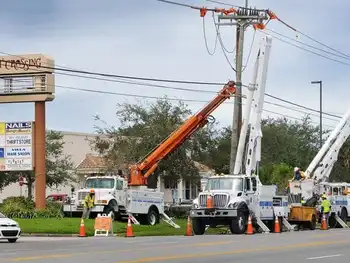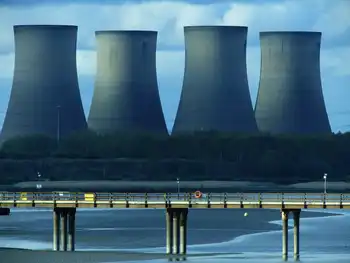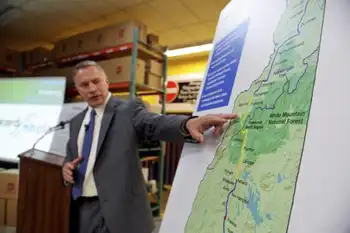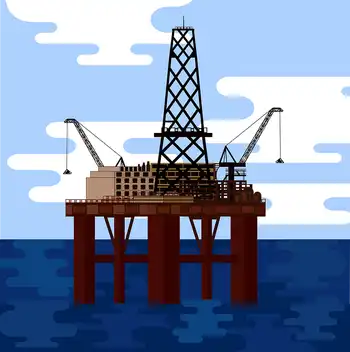The waste-to-energy race
LONG BEACH, CALIFORNIA - Government officials from around the world used to come to this port city to catch a glimpse of the future: Two-story piles of trash would disappear into a furnace and eventually be transformed into electricity to power thousands of homes.
Nowadays, it's U.S. officials going to Canada, Japan and parts of Western Europe to see the latest advances.
The Long Beach plant, for all its promise when it began operations roughly 20 years ago, still churns out megawatts. But it is a relic, a symbol of how California, one of America's greenest states, fell behind other countries in the development of trash-to-energy technology.
"I am having a hard time explaining why California is so far behind," said Eugene Tseng Tseng, a University of California, Los Angeles law professor who spent the last three months leading delegations on overseas tours.
While so-called biorefineries have blossomed abroad, concerns that technique would undermine recycling efforts and create worse air pollution stalled efforts in California. With space for garbage dumps dwindling, proponents of a new breed of the technology hope to win over detractors.
Los Angeles County officials want to build three plants at a total cost of $200 million to demonstrate how far the technology has come as they scramble for alternatives to closing the world's largest landfill and shipping trash four hours by rail to an abandoned goldmine near the Mexico border.
If they prove successful at reducing waste and producing power, there's no guarantee they'll usher in a new wave of garbage-gobbling technology.
Efforts to pass legislation that would have given waste-to-energy plants credit toward recycling and renewable energy goals so cities could meet state mandates hit a snag this year when some environmentalists argued that such facilities are no different from incinerators, which do not receive credits.
"We have the most aggressive goals for recycling and renewable energies but we've also got groups fighting us on solar, wind and now this," said Coby Skye with the county's Environmental Programs Division. "There are no other options if we can't get these technologies moving forward."
Part of the reason that Europe and Asia are now ahead of the U.S. on such technology is that they had to grapple with the lack of dump space years earlier. Many are also signatories to the Kyoto Protocol and must reduce greenhouse gas that are produced as waste decomposes in landfills.
The county plan, which still needs financing and permitting, is to build three demonstration plants in Riverside and Orange counties. They would either use heat to turn trash to energy or use microorganisms, which would eat organic material and create methane to produce power. The byproduct can also be used as compost.
Each plant would be a little smaller than a typical biorefinery and would convert as much as 300 tons of trash per day, accepting trash from all over. Los Angeles County alone produces about 33,000 tons of garbage a day.
The plant in Long Beach, which was completed in 1988, consumes about 1,550 tons of trash per day. Unrecyclable garbage is fed into a furnace and the steam generated from burning the trash is used to drive a turbine generator, producing enough electricity to power 35,000 homes.
The resulting ash is also used to pave roads at the county's dump.
Scott Smithline with Californians Against Waste, a key opposition group, said he has toured such facilities around the world.
To build a clean-burning plant in an area synonymous with smog, he said, garbage costs would soar. He also fears that efforts to increase the mandate that cities recycle half their garbage will fail if communities have contracted to send that waste to a biorefinery.
"What Californians care about is is the air going to be clean?" he said. "What I don't want to see is this done on the cheap."
Critics call the technology experimental and say building such refineries would be a step back to the 1970s and 1980s when incinerators were a top producer of toxic air contaminants.
But Bill Welch, an emissions expert at the University of California, Riverside said times have changed and biorefineries produce about the same amount of pollution as refineries, chemical plants, dry cleaners and auto body shops. "Incinerators got a horrible reputation and deservedly so, but since then the air pollution technology is so sophisticated," said Welch, who was contracted by the Bioenergy Producers Association to study emissions data from facilities around the world.
"As an environmental scientist, I think the biggest threat we face is global warming. That's going to make many more people sick than any of the emissions from these plants will," he said.
Striking a balance between fresh air and fewer greenhouse gases remains a challenge, and has some environmentalists saying it's time to take a hard look at alternatives.
"The current situation with our trash both because of our over consumption and over-reliance on landfills is not sustainable," said Martin Schlageter, who heads the Coalition for Clean Air. "All options have to be on the table."
The federal government appears to be taking such technology seriously.
The Navy has partnered with UCLA to study biorefineries in an effort to meet a national renewable energy plan that includes half of the agency's energy usage coming from alternative sources by 2020.
Leslie L. McLaughlin, the solid waste program manager for the Navy Region Southwest in San Diego, said she understands the concerns people have and wants to make sure they proceed carefully.
"My focus on this is to make sure we don't create one environmental problem by trying to solve another," she said.
Related News

FPL stages massive response to Irma but power may not be back for days or weeks
MIAMI - Teams of Florida Power & Light linemen, assisted by thousands of out-of-state utility workers, scrambled across Florida Monday to tackle the Herculean task of turning the lights back on in the Sunshine State.
The job is quite simply mind-boggling as Irma caused extensive damages to the power grid and the outages have broken previous records.
By 3 p.m. Monday, some 3.47 million of the company's 4.9 million customers in Florida were without power. This breaks the record of 3.24 million knocked off the grid during Hurricane Wilma in 2005, according to FPL spokesman Bill Orlove.
Prepared to face massive outages, FPL brought some 18,000 utility…




